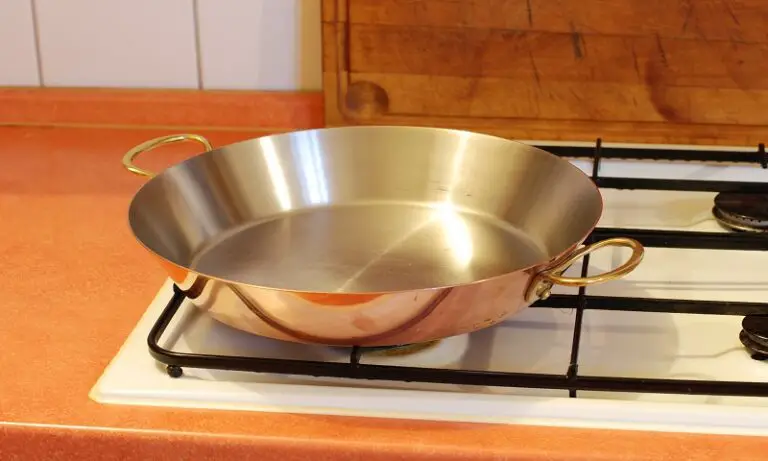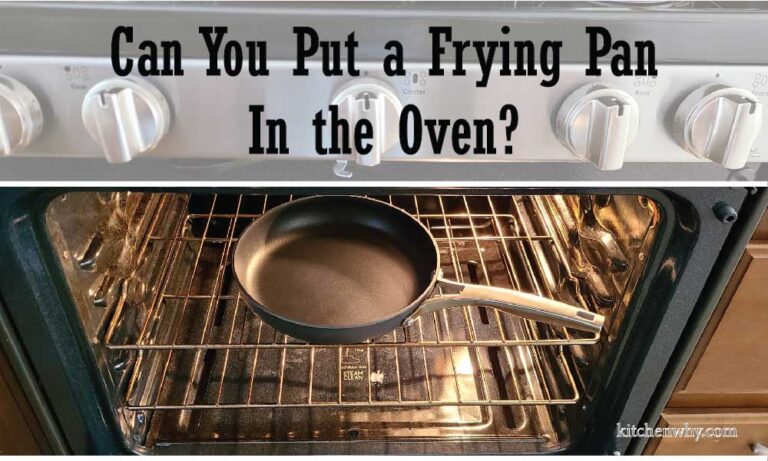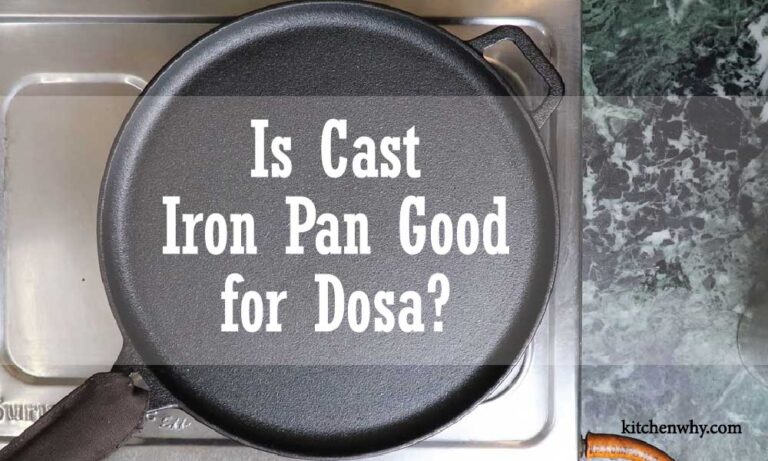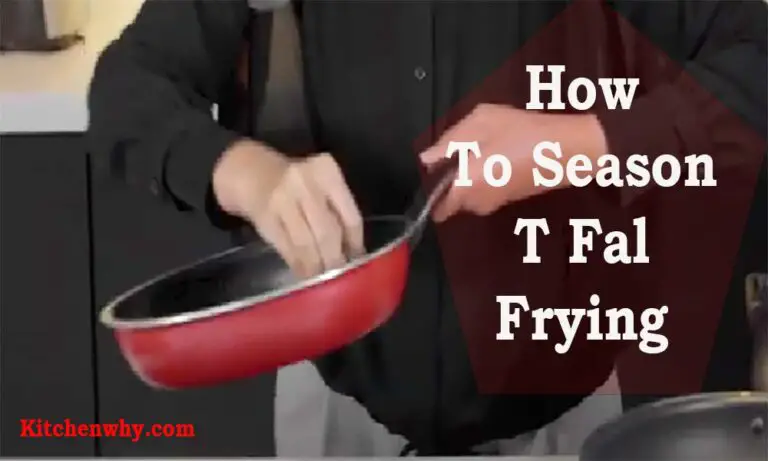Why Use a Wok Instead of a Frying Pan? Know The Secret True
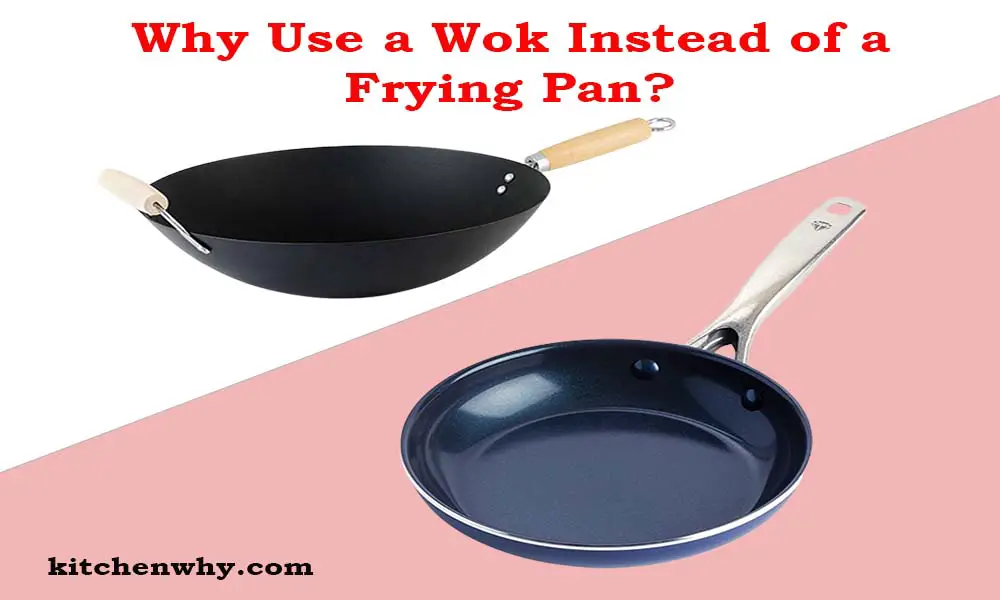
Why use a Wok Instead of a Frying Pan? If you’re a cooking enthusiast, you may have asked yourself this question. The truth is that woks and frying pans are two very different types of cookware, each with its unique advantages and disadvantages.
But, you can use a wok instead of a frying pan because it facilitates even cooking and requires less oil, making it better than a frying pan. Woks are versatile, heat up quickly, and distribute heat evenly, leading to better-tasting food and easier cleanup.
In this blog post, I’ll examine the reasons for using a wok instead of a frying pan. Whether you’re a seasoned chef or a novice cook, you will find useful tips and tricks to take your culinary skills to the next level. So, grab your wok, and let’s get cooking.
Why Use a Wok Instead of a Frying Pan?
When it comes to cooking, there are a variety of pans and utensils to choose from. However, a wok is a versatile and indispensable tool in the kitchen that can elevate your cooking game to the next level.
Here are some reasons why you should consider using a wok instead of a frying pan.
1. Wok’s Unique Shape
The wok’s unique shape is one of its most significant advantages. It has a deep bowl-like shape that allows for even heat distribution and faster cooking times. The curved sides also make it easier to stir and toss food, preventing it from sticking to the bottom or burning. In addition, the wok’s shape makes it perfect for cooking large quantities of food, making it a go-to for family-style meals and entertaining.
2. Versatility
Another reason to use a wok is its versatility. It can be used for stir-frying, deep-frying, steaming, boiling, and even smoking food. You can cook everything from vegetables to meats in a wok, making it a great all-purpose cooking tool. In addition, woks can be used on various heat sources, including gas stovetops, electric stovetops, and even outdoor grills.
3. Health Benefits
Using a wok can also have health benefits. Because of its shape and even heat distribution, less oil is needed to cook food in a wok compared to a frying pan. This means that your food is less greasy and contains fewer calories. In addition, woks are often made from materials such as cast iron or carbon steel, which are naturally non-stick and do not leach chemicals into your food.
4. Quick Cooking Times
Another advantage of using a wok is its quick cooking times. The high heat of a wok allows food to cook quickly, which helps to lock in nutrients and flavors. This is particularly important when cooking vegetables, which can lose nutrients when overcooked. In addition, quick cooking times mean that you can whip up a delicious meal in no time, making a wok a great tool for busy weeknights.
5. Cost-Effective
Woks are also a cost-effective cooking tool. They are often less expensive than other types of cookware and can last for many years when properly cared for. In addition, because a wok can be used for so many cooking techniques, you can save money by not having to purchase multiple pots and pans.
6. Easy to Clean
Cleaning a wok is also relatively easy. Because of its non-stick surface and curved shape, food particles are less likely to stick to the bottom or sides of the pan. A quick rinse with hot water and a gentle scrub with a soft sponge should be enough to clean most woks. In addition, many woks are dishwasher safe, making cleanup even easier.
7. Flavorful Cooking
Because of its high heat and quick cooking times, a wok can help to create flavorful and aromatic dishes. The high heat allows for a perfect sear on meats and vegetables while infusing food with the flavors of any seasoning or sauce. In addition, the wok’s shape allows easy tossing and mixing of ingredients, ensuring that each bite is flavorful.
Wok Vs Frying Pan
As long as we know Why Use a Wok Instead of a Frying Pan, let’s check some differences between woks and frying pans. Woks and frying pans have distinct characteristics that affect how they perform in the kitchen. The wok’s shape and size differ from a frying pan, giving it a unique advantage. Woks are characterized by their deep bowls, sloping sides, and a wide surface area while frying pans have flat bottoms, straight sides, and a relatively smaller surface area.
These differences make woks ideal for stir-fries, where ingredients are continuously tossed and flipped, and for deep-fry dishes. The sloping sides of the wok also allow for quicker cooking and greater heat distribution, resulting in a more even cooking.
In contrast, frying pans are better suited for sauteeing, shallow frying, and pan-fry dishes, where the ingredients are cooked with lesser movement. Ultimately, whether to use a wok or a frying pan depends on the cooked dish and the cooking technique required.
How to Choose a Wok?
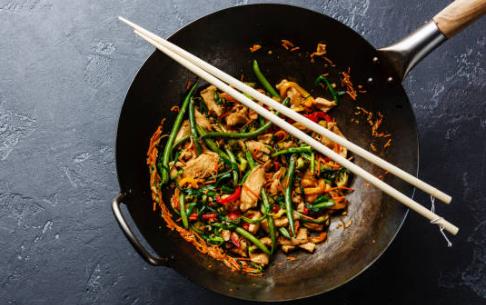
The wok is an essential tool in Asian cuisine due to its versatility in accommodating large amounts of food while adding variety to cooking. However, not all woks are created equal, and selecting the right one is crucial for optimal cooking results. The key considerations when selecting a wok include the materials, size, and shape.
The material of the wok impacts cooking significantly. Carbon steel is preferred for professional chefs because of its quick heating and cooling properties, allowing precise temperature control. Cast iron, which retains and distributes heat evenly when seasoned, is popular. Stainless steel is more affordable, but it doesn’t conduct heat well.
Wok size is determined by the number of people served and the food required. A 14-inch diameter wok is ideal for a family of four, while larger groups require a more extensive wok.
The wok’s shape also impacts cooking. The traditional round-bottomed wok is excellent for stir-frying, deep-frying, and steaming but requires a wok ring to stabilize it on a traditional stovetop. The flat-bottomed wok is versatile and stable on a flat stovetop surface, while the hybrid wok combines the best of both round and flat-bottomed woks.
Choosing the right wok is vital for authentic stir-fry dishes and other delicious recipes. When selecting a wok, consider the material, size, and shape for the best cooking experience.
How To Use And Care For A Wok?
If you’re tired of using a traditional frying pan for stir fry, it’s time to switch to a wok. Woks have been used in Chinese cuisine for centuries due to their ability to cook food quickly, and evenly and distribute heat effectively.
Here are some essential tips for using and caring for a wok.
- Seasoning The Wok: Seasoning the wok is critical for removing the protective oil coating and adding a non-stick surface. Wash the wok with warm water and dish soap, dry it completely, and place it on high heat. Add vegetable oil and swirl it around to coat the surface evenly. Heat the wok until it begins to smoke, let it cool, and clean it with a soft sponge or cloth after each use.
- Proper heat distribution: It is necessary for searing food at high temperatures without burning or sticking. Test the heat by dropping a small amount of water onto the surface. Add oil and swirl it around before adding ingredients. Move food around constantly and move it away from hot spots.
- Cleaning and maintenance: Careing is crucial for extending the wok’s lifespan. Clean it with warm water and a soft sponge or cloth, dry it thoroughly after each use, and store it in a dry place. If food is stuck, fill the wok with hot water, bring it to a boil, and use a soft-bristled brush to scrub it away.
Using and caring for a wok doesn’t have to be complicated. You can enjoy delicious, evenly cooked meals by seasoning them properly, ensuring proper heat distribution, and cleaning it regularly.
Frequently Asked Questions- Why Use a Wok Instead of a Frying Pan?
1. What Is A Wok?
A wok is a traditional Chinese cooking pan with high-sloping sides and a round bottom, designed for healthy and quick stir-frying.
2. What Makes A Wok Better Than A Frying Pan?
A wok distributes heat more efficiently, requires less oil, and results in faster and more even cooking, giving your dishes a unique flavor and texture.
3. How Is Using A Wok Healthier Than A Frying Pan?
Using a wok requires less oil, which makes it an ideal choice for healthier cooking. The high heat also helps to retain the nutrients in vegetables, which can be lost when frying in a pan.
4. Is Cooking With A Wok Difficult For Beginners?
Cooking with a wok is relatively easy once you get used to it. The most important thing is to have all your ingredients prepared and ready to cook before starting, and to cook on high heat to ensure the best results.
5. Do I Need A Special Kind Of Stove To Use A Wok?
Not necessarily, but a stove with an open flame works best. You can still use your wok if you have an electric stove, but it may not heat up as evenly or quickly. A wok ring or a flat-bottomed wok can also be used on an electric stove.
Woks vs. Skillets: Do You Need Both? | Gear Heads
Final Words
If you’re wondering why use a wok instead of a frying pan, there are a number of compelling reasons to consider. Using a wok instead of a frying pan can significantly enhance the flavor, texture, and overall quality of your cooking.
A wok’s unique shape and design allow for even heat distribution and faster cooking times, resulting in perfectly cooked stir-fries, curries, and other Asian-inspired dishes.
Furthermore, the high sides of a wok make it perfect for tossing and stirring ingredients without the risk of spillage or splattering. The sloping sides also allow for easy access to the food, making it easier to cook and serve.
So, next time you’re in the kitchen, consider ditching the frying pan and reaching for a wok instead – your taste buds will thank you.


